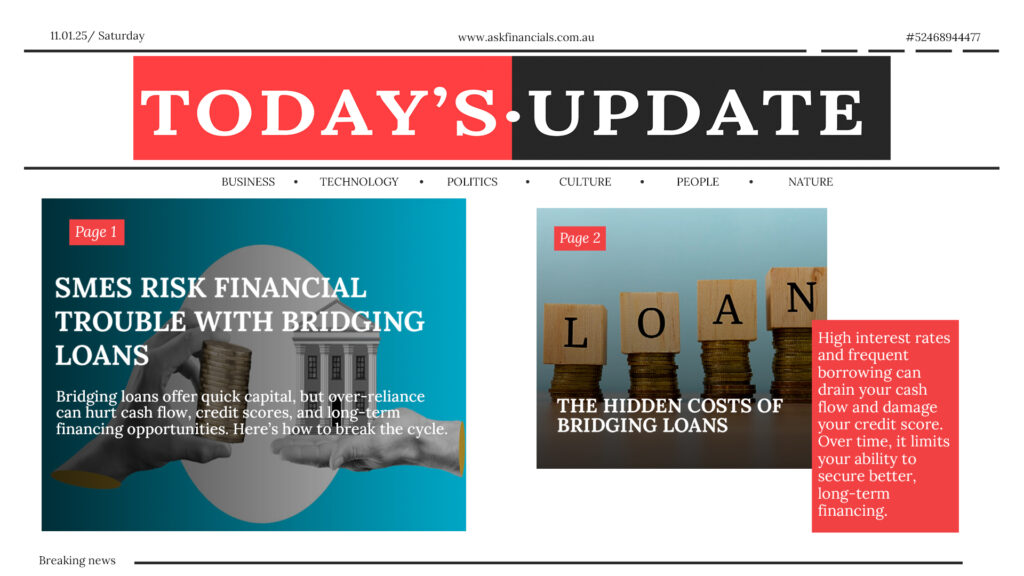Bridging credits are a source of instant financial aid to small and medium enterprises, which can enable them to raise quick capital for bridging funds or to finance short-term opportunities. The problem, however, is that as much as these loans may seem useful at first, depending too much on them can be followed by huge financial problems. Continually taking up bridging credits results in higher borrowing rates, a worsened credit rating, as well as a limited capacity to obtain long-term finance.
Reliance on bridging loans: hazards
Higher Interest Rates: Usually speaking, bridging loans have higher interest rates than conventional loans. This is so when lenders demand a premium for the higher risk, and they are by nature short-term. SMEs may become entangled in a situation where rising borrowing costs consume their cash flow, thereby hindering their ability to reinvest in business development or meet operational expenses.
Effect on Credit Scores: Credit searches follow every business application for a bridging loan. The credit rating of the organisation suffers more the more often these apps are used. Frequent credit enquiries are seen by lenders as evidence of an unstable corporate financial situation. This lowers the creditworthiness of a company and makes it difficult to get loans at reasonable conditions down the road.
Difficulty Securing Long-Term Loans: When a firm relies on bridging loans regularly, banks and other financial institutions view it as a dangerous borrower, which makes it difficult to obtain long-term loans at lower interest rates. As payday lenders are impacting anyone’s capacity to obtain a house loan, the frequent use of bridging loans will make it considerably more difficult for SMEs to obtain the finance essential for long-term growth.
Practical Strategies to Avoid the Bridging Loan Trap:
Understanding of Financial Situation: Expected financial deficits should be checked for in a cash flow and a cash flow projection to see if any likely shortages would result. Seasonal variations might suggest the moment when income falls short.
Creating a cushion of savings or an emergency fund can help you to pay unanticipated expenses in times when using short-term credit might prove to be a bad choice. A financial cushion helps to smooth out changes in cash flow.
Funding Sources: Instead of seeking cash, stop focusing just on high-interest bridge loans, equity financing, and landlines of credit. Usually, these channels give better conditions for cash flow among your several accounts.
Anticipate complications in plans: Get ready with your backup plan to handle changes in market dynamics or operational disturbances, including supplier chains. Diversify your sources using flexible staffing plans for preparation.
Always Stay Updated This covers all the legislative changes as well as additional funding windows open to you and economic patterns. You do not know it well in advance. Therefore, it helps you avoid rather costly borrowing.
Are you looking for financial support?
Make effective growth plans to prevent the traps of bridging loans.
Contact Ask Financials now for personalized solutions tailored to the business’s needs. We’ll create a financial future together!


